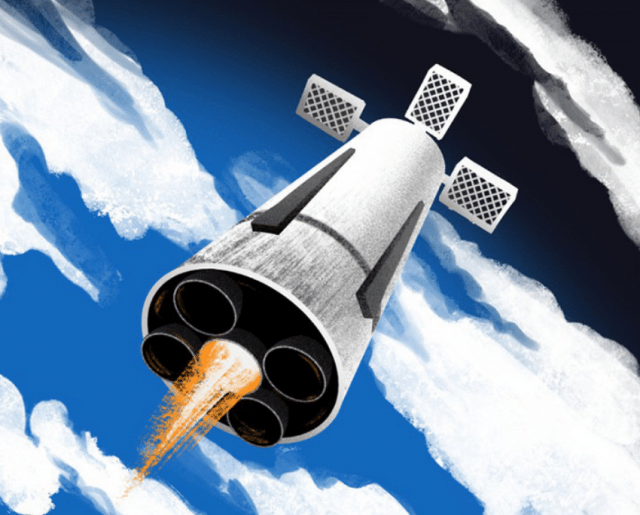A new interview with the First Deputy Director General of Roscosmos contains a number of rather unusual theses. Among them is an assessment of the implementation of the Amur—LNG rocket as a prospect for the entire domestic space industry until 2054. In terms of its parameters, this rocket is close to the Falcon 9, which SpaceX itself already considers obsolete.
Andrey Yelchaninov, the first deputy director general of Roscosmos, gave the Interfax news agency an interview with an unusual content. In addition to the expected theses on the implementation of the Russian orbital station by 2030 (with the launch of the first module in 2027), he voiced a number of extremely unexpected ideas.
The first of them is that Roscosmos sets itself the task of returning to the previous volume of exports of its services. Unfortunately, Yelchaninov did not disclose how this could happen in the conditions of the existence of SpaceX, which provides launch services at a price lower than that of the Russian state corporation. However, he noted that "this is a long-term game, as in all new markets with great competition." In other words, Roscosmos does not expect a quick return to such a volume of exports.
The second exotic idea was voiced in response to a journalist's question about Amur LNG. Yelchaninov said: "The project is a landmark for the industry, it is our tactical perspective for the next 30 years." Given the time limit, apparently, instead of the word "tactical" he wanted to say "strategic".
This statement is very unexpected. As Naked Science wrote in detail four years ago, the Amur LNG project is a slightly scaled-down Russian version of the Falcon 9, with only five methane engines instead of nine kerosene ones. The head of Roscosmos, Yuri Borisov, previously said that due to the use of methane, which does not give carbon deposits, the first stage of Amur LNG will be used 50, and possibly 100 times. In his opinion, this is more than that of the Falcon 9, for which the number of re-launches of the first stage "is usually no more than 10 times."

The return of the reusable first stage of the future rocket in the artist's view
Image source: Vesti
However, in fact, SpaceX already has experience using the first stage 20 times, and company representatives noted that they do not see fundamental limitations for a much larger number of applications.
Yelchaninov's words about the 30-year prospect of Amur LNG are most surprising in that SpaceX itself does not call its similar Falcon 9 carrier promising. The American company explicitly stated that it would become obsolete already in the 2020s (after which it would be abandoned), since Starship would be able to launch cargo into space at many times lower prices. This is due to the fact that Starship has two reusable stages at once, and not just the first one, like the Falcon-9 or Amur LNG.
It is unclear how Roscosmos plans to return to the previous export volumes and simultaneously use Amur LNG until 2054. Four years ago, Naked Science wrote that Russia would not be able to practically implement Amur LNG, since the attempt to reproduce the Falcon 9 was relevant back in the 2010s, and in the 2020s it was clearly too late.
The first launch of Amur LNG is planned for 2030, that is, just by the time SpaceX has basically abandoned new Falcon 9 launches. Thus, if the Russian state corporation is actually going to implement this project, it will lead to a waste of funds.
However, everything may turn out differently — it is enough to recall the long planned construction period of the rocket. During these six years, the leadership of Roscosmos will largely change. This means that the first launch of the Amur LNG, which was obviously outdated by that time, may be abandoned.

